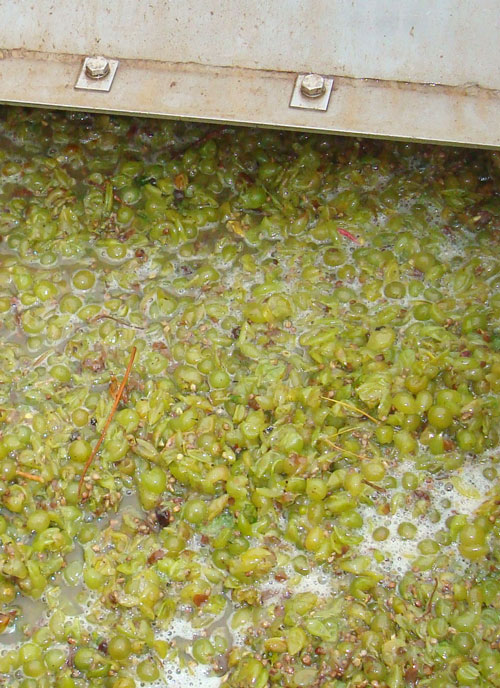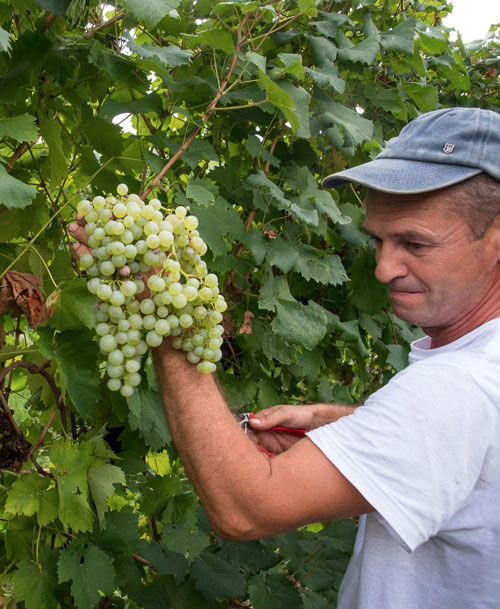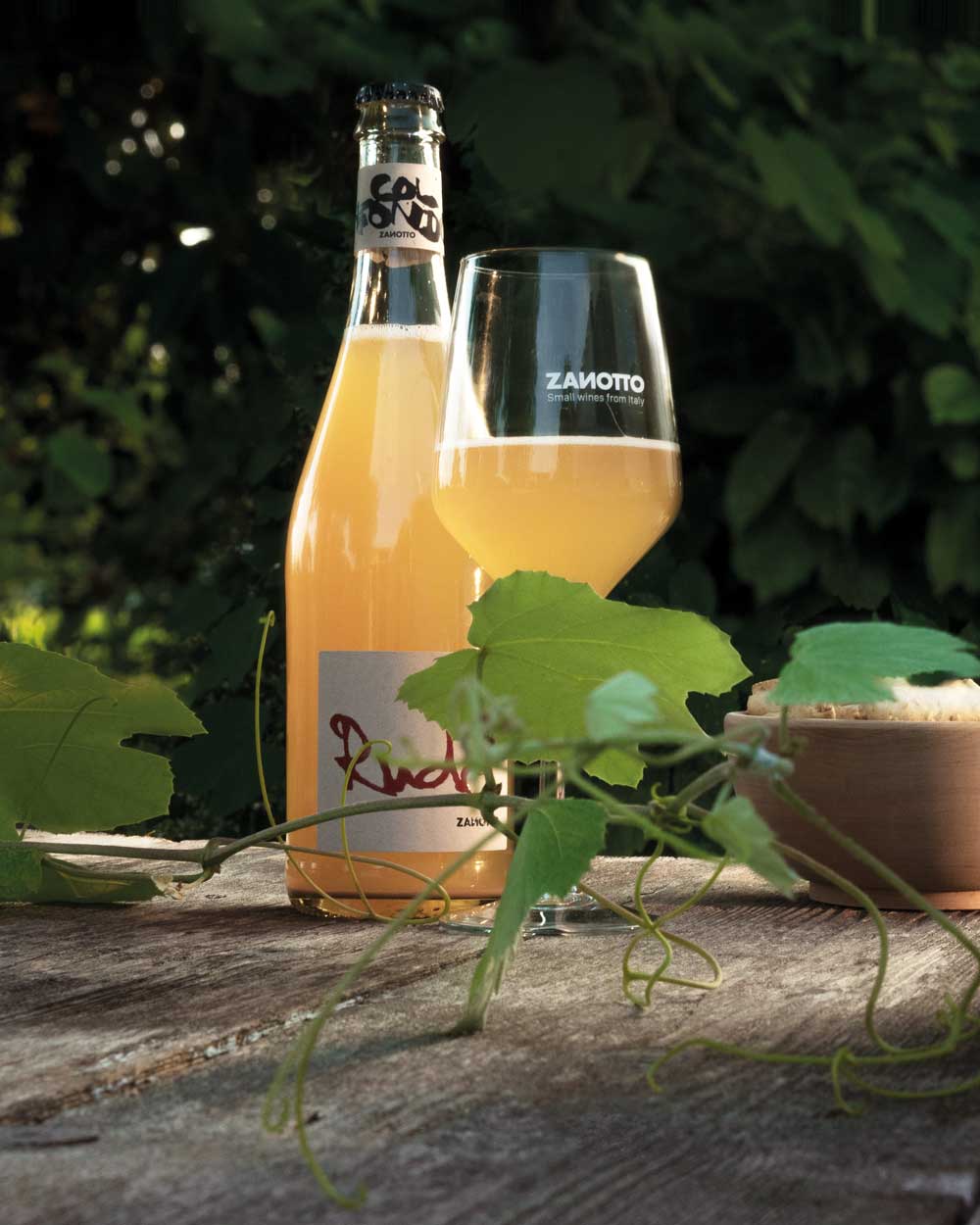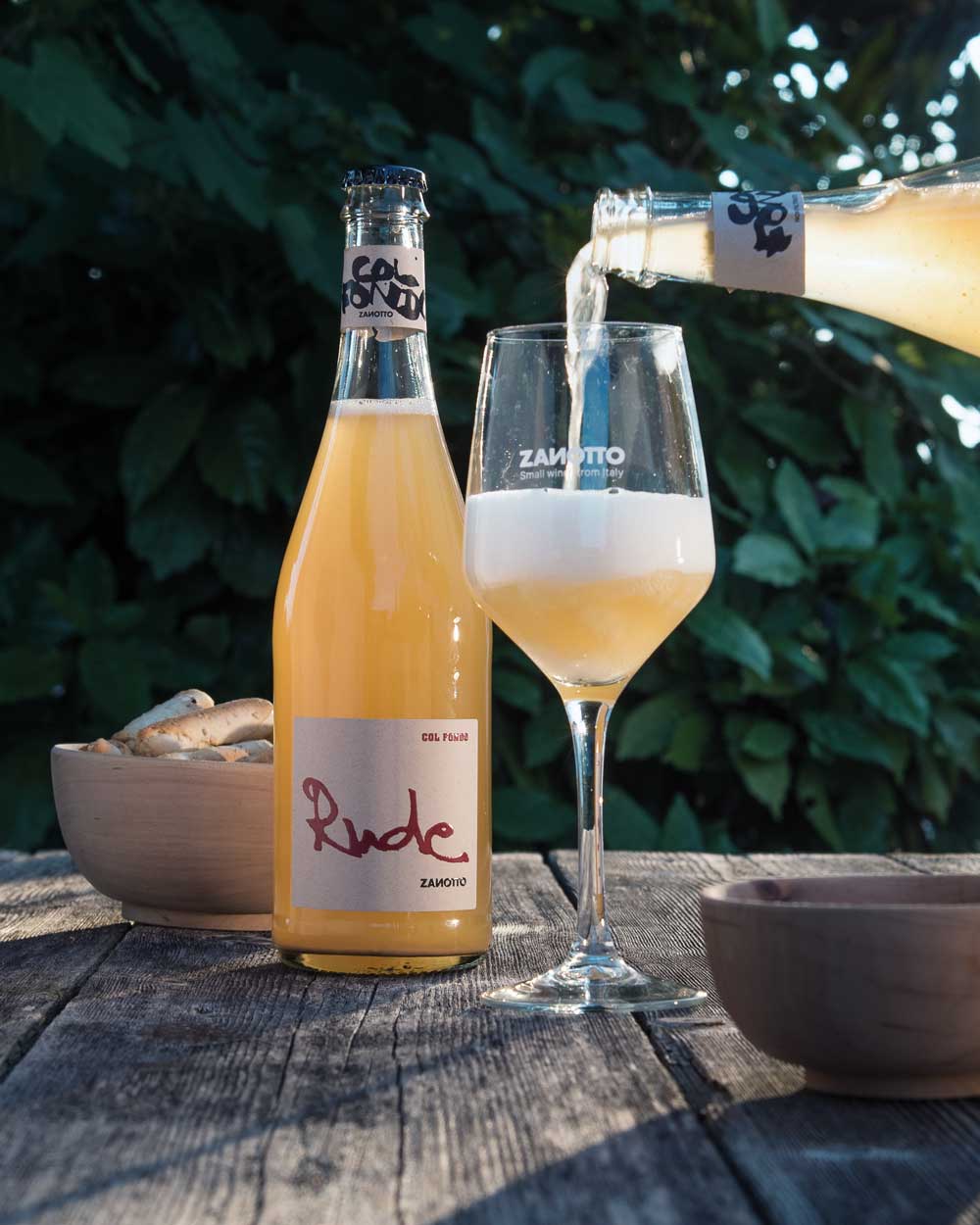Non sono presenti prodotti nel carrello.
Rude
Sparkling white wine
Fermentation in the bottle
11% vol – 750 ml
A rough and tough wine, with a strong personality. As in the past, the white grapes are vinified, macerated over a number of days with pumping over. The result is an archaic color tending toward orange.
The second fermentation takes place in the bottle, and remains on the lees, without added sulphites.
This sparkling wine shows mature fruit and edgy tannins, and a distinctively interesting flavor profile.
Serving Temperature: 8° – 10° C
Unfiltered Wines by Riccardo Zanotto
To learn more
Why Are They Called Macerated Wines?
Macerated wines earn their name from an old craft: grape skins steep with the must after crushing, sometimes for days, sometimes for weeks. In whites, this brings bold hues—golden to orange—and rich flavors: honey, spices, ripe fruit. Unlike classic whites, they draw their soul from the skins, much like reds, a tradition Friuli upholds with grapes like Ribolla Gialla.
But maceration can reach extremes, as with Zanotto’s “Rude”: white grapes—Glera, Bianchetta Trevigiana, Verdiso, Perera, Boschera—soak on their skins for thirty days, handled like reds, with no filtration or sulfites. After spontaneous fermentation and a stint in wood, it referments in the bottle with native yeasts and a hint of must from withered grapes, yielding a daring wine—orange-tinged gold, rough and tannic, exclusive for those who crave untamed macerated wines. It’s a throwback to raw, instinctive winemaking, a rugged hymn to the earth.

To learn more
Roots and Bubbles: The Native White Grapes of Veneto
Veneto, a land of fresh and aromatic white wines, holds a treasure trove of native grape varieties waiting to be discovered beyond the renowned Glera. From the hills of Eastern Veneto to the plains and slopes of the west, these grapes weave tales of tradition, terroir adaptability, and unique flavors. Let’s explore them, blending their characteristics, spread, and preservation prospects.
The Heart of Eastern Veneto
Glera: The undisputed star of Prosecco, with roots tracing back to the Trevigiano area between the 17th and 18th centuries. Fresh and versatile, it yields wines with delicate aromas: white flowers like wisteria and acacia, white-fleshed fruits (apple, pear), and citrus hints. The global triumph of Prosecco has made it a worldwide icon, with a spread that faces no rivals or risks of extinction. Its strength lies in its ability to conquer markets and its productivity, meeting an ever-growing demand.
Bianchetta Trevigiana: A historical companion to Glera in the Treviso province, it once formed the base of dry, light white wines. It stands out for its lively acidity and elegant aromas: wildflowers, aromatic herbs, and a citrus touch. Today, its presence has dwindled, confined to small local productions. Though not at immediate risk, its limited spread reflects a lesser commercial adaptability compared to Glera, yet its traditional value keeps it alive.
Verdiso: A true gem of the hills between Conegliano and Valdobbiadene, documented since the 18th century, its name comes from the greenish hue of its berries. It offers wines with sharp acidity, notes of green apple, citrus, fresh herbs, and a subtle minerality. Its spread, once broader, has narrowed, but renewed interest—especially for “ancestral” sparkling wines—is boosting its prestige. Thanks to the dedication of passionate producers, its survival is secure, proving tradition can find new life.
Perera: Less known but rooted in the Piave area, it brings aromas of ripe white fruit (especially pear), yellow flowers, and a slight aromatic edge. Often used in blends, its spread remains limited to niche productions. Here, a real risk emerges: without strong support, this variety could face genetic erosion, overshadowed by more sought-after grapes. Its uniqueness, however, is a call to keep it from being forgotten.
A Journey to Western Veneto
Garganega: The queen of Soave and Gambellara, it reigns over Western Veneto in the Verona area, with origins lost in history. Its wines release notes of bitter almond, white flowers, citrus, and a volcanic minerality that enhances its character. Its spread is robust, backed by national and international prestige that makes it a cornerstone of Veneto’s winemaking. Its adaptability to the terroir and consistent quality shield it from any risk, marking it as a success story of tradition and market appeal.
Vespaiola: A standout from Breganze in the Vicenza province, it inspires the prized Torcolato, a sweet passito wine, but also shines in dry whites with vibrant citrus notes and pleasant acidity. Its spread is narrower than Garganega’s, but its deep ties to the land and the recognition of its denominations keep it strong. It faces no risk, thanks to a loyal niche of admirers and producers who champion its potential.
A Heritage to Preserve
The paths of these grape varieties show how their spread hinges on a blend of factors: terroir adaptability, productivity, market demand, and the weight of tradition. Glera triumphs through Prosecco, while Garganega asserts itself with quality and prestige. Varieties like Perera, less productive or less in demand, rely on the passion of those who believe in biodiversity. Safeguarding this viticultural mosaic means preserving not just flavors, but the history and identity of a Veneto destined for the vine.




